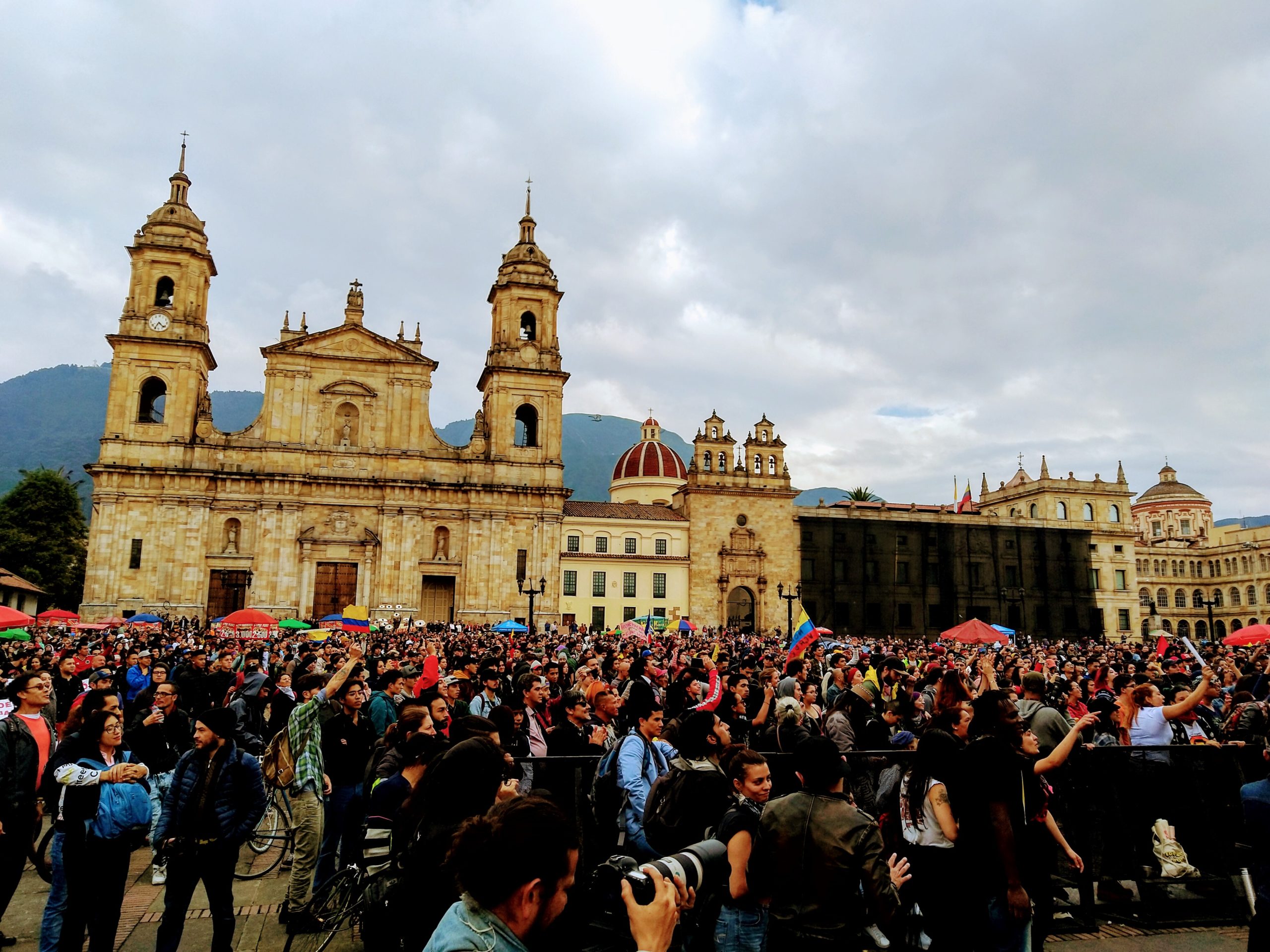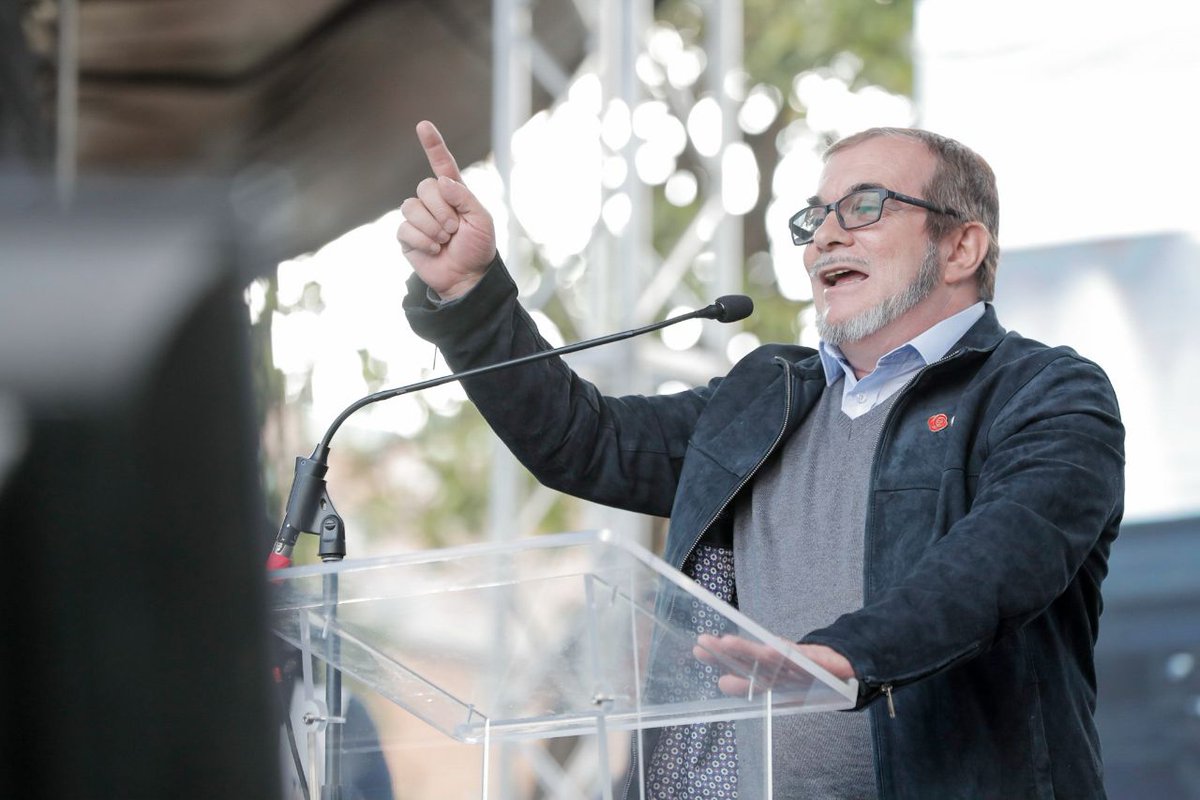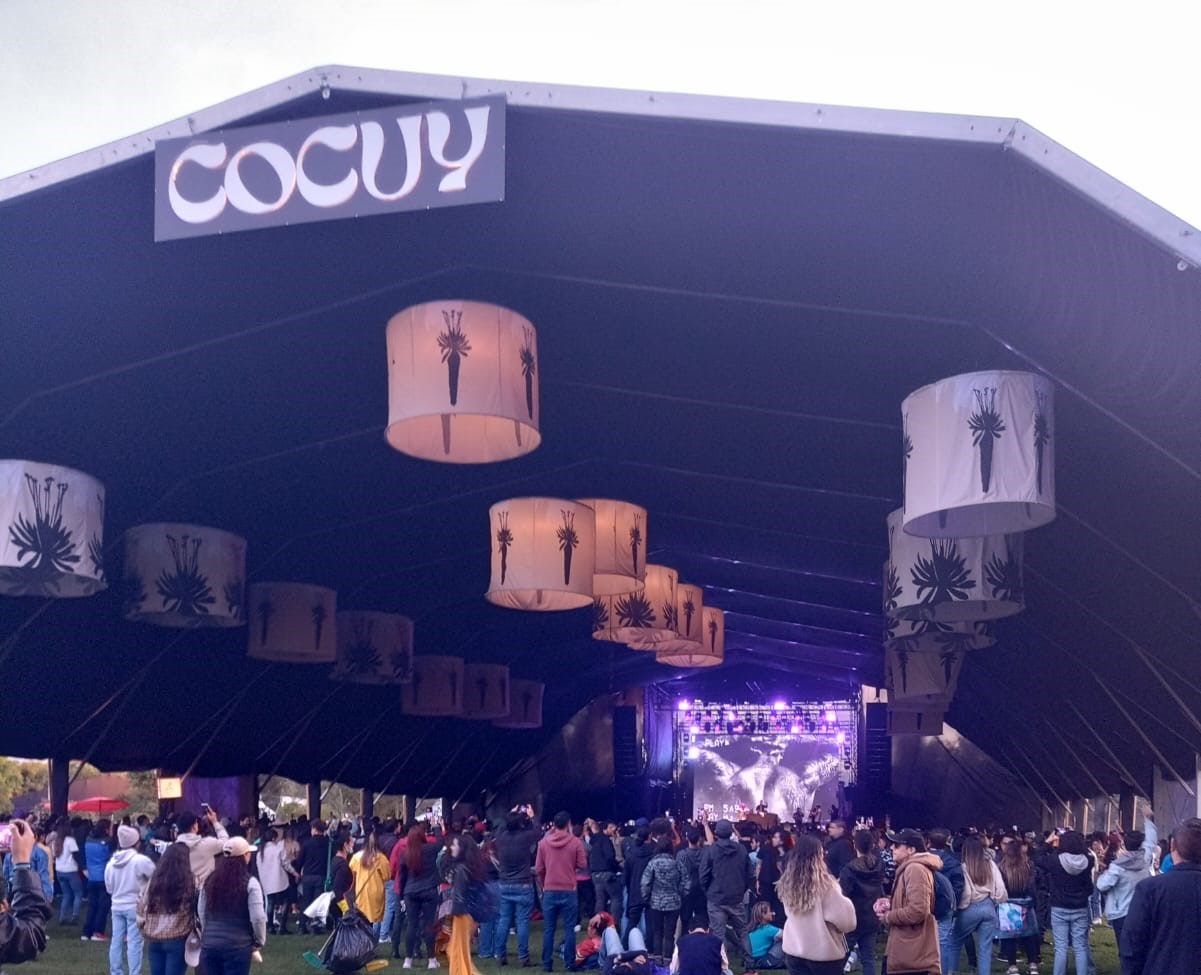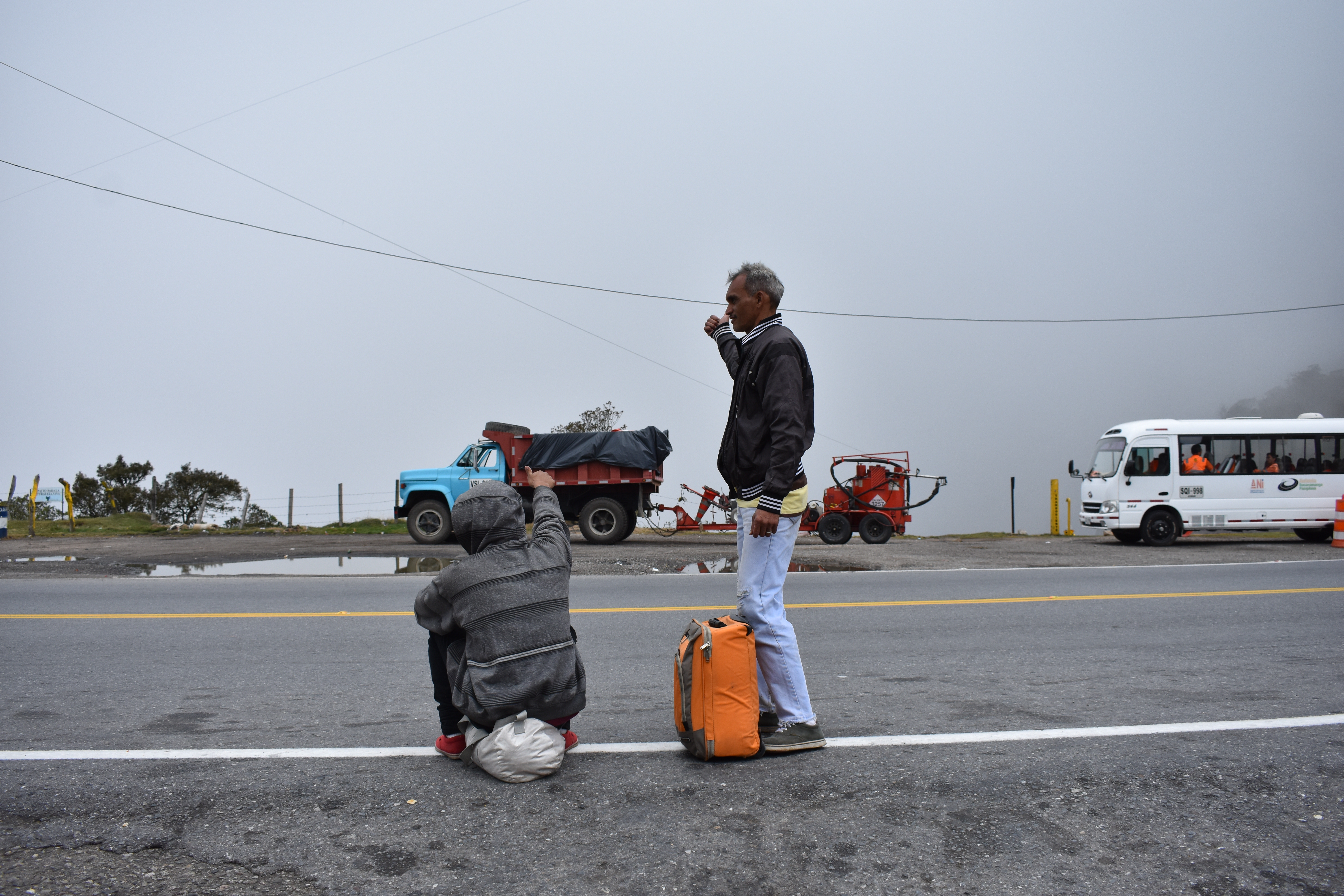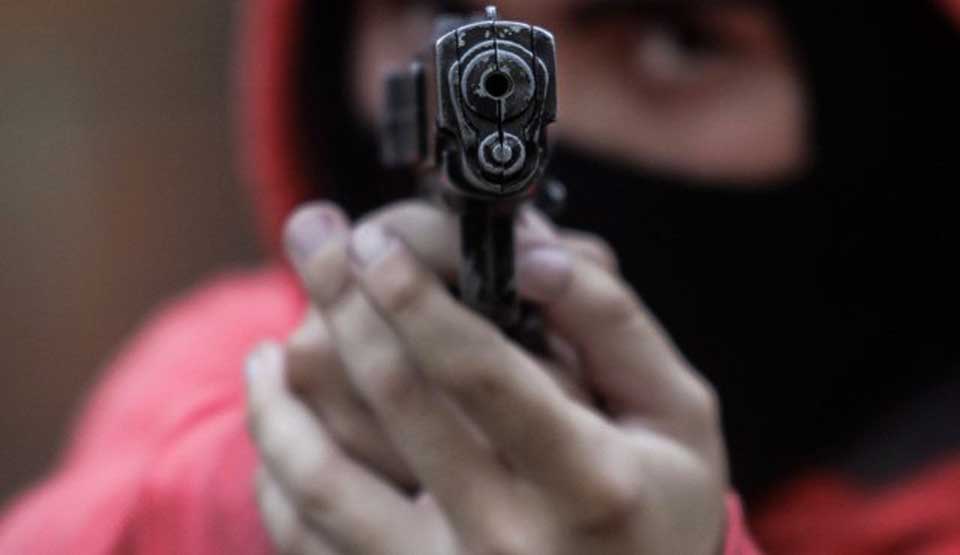
Sicarios, or assassins, are paid a bounty for killing a police officer.
Plan pistola sees cash bounties offered for the murders of police officers. In his latest column, Gerald Barr looks at the motives behind such attacks and how the police are responding.
Racing through a coastal town by taxi last month, the needle touching 130, I asked the driver why the rush. “No hay policía” – there are no police – he replied. Why? Plan pistola.
In fact, over several days in sweltering Córdoba I did not see a single uniformado. Over a cold beer, a local friend explained this lack of law and order.
“Plan pistola,” he said. “The tombos are keeping a low profile. The few you do see are so scared they are walking around with their finger on the trigger.”
With good reason, it turns out. The ‘pistol plan’ is a tactic that has been used by armed gangs at various times in Colombia’s history to gun down police or military personnel in the street, often by offering a cash bounty to any sicario – assassin – willing to pull the trigger.
In this case the perpetrators are reported to be the Autodefensas Gaitanistas de Colombia (AGC), or Clan del Golfo as the government calls them (referring to their origin in the Gulf of Urabá on the Caribbean coast). According to Blu Radio, in May the killing campaign cost the lives of 13 policemen with dozens more injured.
The details make grim reading: a hand grenade thrown into a police station in Cartagena. A policeman in Córdoba was shot dead while travelling to a village and in a nearby vereda a retired policeman was executed. In the south of Bolívar Department, six men on motorbikes surrounded a 19-year-old police recruit and shot him in the head.
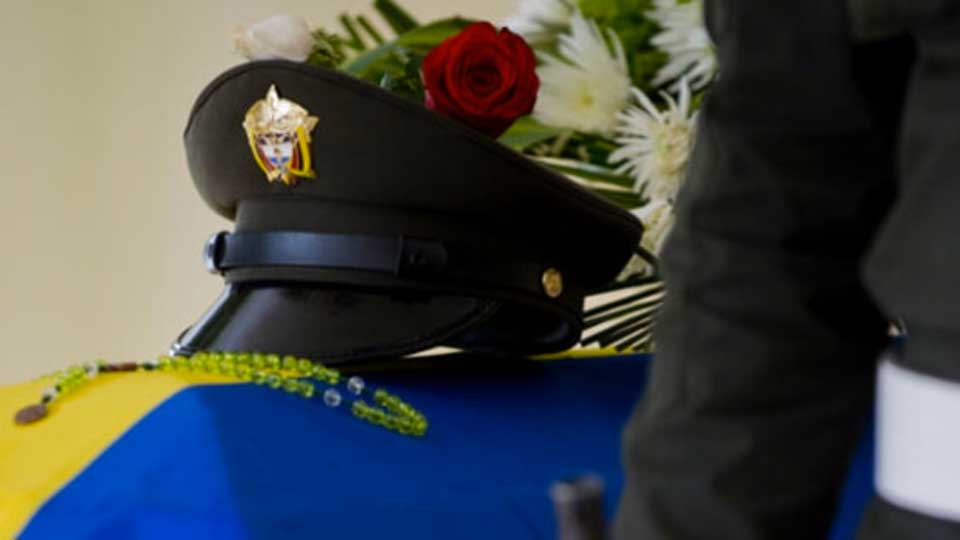
13 police officers have been killed and dozens more injured because of plan pistola.
This brutality underscores the problems the Colombian state faces trying to maintain civic policing while simultaneously battling heavily-armed crime groups. The latter requires military-style commando raids. The former requires being out on the street in the community and a sitting duck to any assassin looking for a pay-off.
These deadly times highlight the fact that normally in Colombia, even in conflict areas, a détente exists between state forces and illegal groups. It’s a necessary coexistence after so many decades of strife often underpinned by corruption and threats, but occasionally by a mutual pact not to tread on toes.
An ex-policeman told me he had worked for many years in a town completely controlled by ELN guerrillas. “How did that work out?” I asked him. “OK, like having two bosses really,” he said. As long as he ‘respected the community’ the ELN left him alone.
Plan pistola is a tactic that has been used by armed gangs at various times in Colombia’s history to gun down police or military personnel in the street, often by offering a cash bounty to any willing to pull the trigger.
Of course plan pistola tears down this tense calm. Tit-for-tat violence quickly escalates, as I found some years back staying in a town in Chocó where the police unit was literally on the run, jogging through the streets several times a day between sandbagged posts.
“Why do they move so fast?” I asked a colleague”. “Guerrilla snipers,” she replied, waving her hand towards the opposite jungle-clad bank of the wide river. “The police keep moving or die.” Sure enough, a month later in a community downriver, a policeman was shot dead in the town square.
But these guerrilla attacks were in hot zones where combatants are always on a war footing, whereas the current plan pistola is also unfolding in urban areas further from the front lines. More surprising is the fact that the AGC, which was born out of paramilitary groups and is alleged to have low-level links to locally-based army and police, seems to have turned on its collaborators.
In this sense they’re following Pablo Escobar’s terror playbook. Like the AGC, at the peak of his powers Escobar enjoyed close support from the state through widespread bribing or threatening of officials – his plomo o plata (lead or silver) policy – but in the early 1990s the state went to all-out war with his drug empire, and the empire struck back.
A cornered Escobar devised a tactic to outsource killing: any street hoodlum could gun down a cop then claim a two million peso reward. This ‘murder franchise’ was particularly effective in that the killings were planned and carried out independently from the central cartel, making them harder to prevent or prosecute. During Escobar’s plan pistola of 1991 more than 500 policemen were gunned down, mostly on the streets of Medellín.
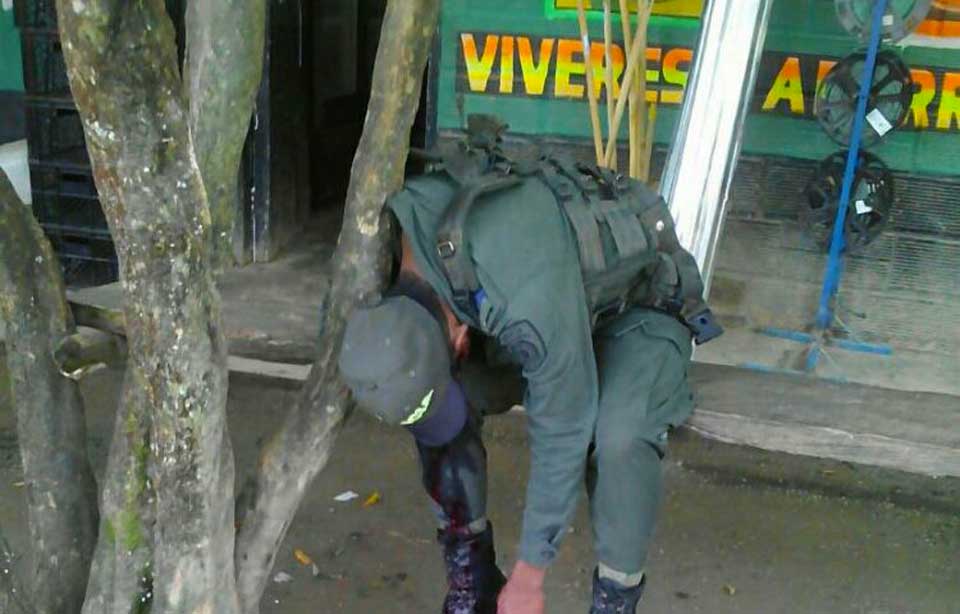
This latest victim was killed in San Jacinto del Cauca, Bolivar.
The fact the AGC is now accused of offering the same amount per killing – two million pesos, USD$700 at today’s value – suggests a return to the dark days of attacks, often against civilian targets, like those unleashed by Escobar. Police claim to have intercepted AGC plans to car-bomb Medellín and Bogotá (something the drug group strongly denies).
But the immediate problem is how police rank and file can stay safe from the street-corner killers of plan pistola.
“Change your routine and reaction time, don’t be distracted by small things” the national police chief told his forces via video links in May. “We’re not going to hide, but must be forceful while taking measures to protect ourselves.”
Easy for him to say, you might think, while his staff face the terrifying prospect of being shot on their own doorstep. Like Escobar’s cartel, and backed by a billion-dollar drug business, the AGC has hundreds of combatants under arms and thousands of paid informants and supporters in all levels of society. In many towns it has eyes and ears on every corner.
It has also spread across Colombia where plan pistola has been detected in nine departments: Chocó, Córdoba, Antioquia, César, Nariño, Arauca, Bolívar, Norte de Santander, Meta. Now, according to public prosecutors, they are targeting Bogotá.
How real is the threat? Clearly for areas like Chocó, Córdoba and Bolívar the attacks are happening and some sicarios captured have established links to the AGC. But in other areas, the threat is more hazy and linked to guerrilla groups like the ELN who are perhaps jumping on the AGC bandwagon.
And what’s behind the plan? At first glance the AGC is breaking the first rule of successful drug trafficking: don’t make waves. Embarking on a nationwide cop-killing spree is hardly flying under the radar. The Clan is probably lashing out after suffering a series of military attacks on their hideouts in their Urabá heartland.
“The death of our police is in retaliation for the blows that we have given them,” said the national police chief, referring to the May killing of a senior Clan commander, Pablito, and the capture of many mid-ranking enforcers and a raid last year which netted nine tonnes of cocaine and dented the drug gang’s finances by USD$250 million.
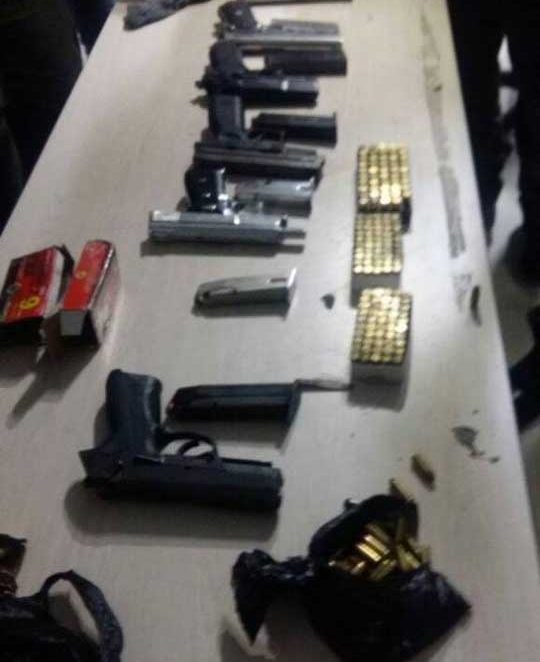
Plan pistola echoes back to the terror regime of Pablo Escobar.
Some observers also see the plan pistola as a cynical step by the AGC to be seen as a ‘political movement raising arms against the state’, a transformation that would bring them benefits such as a peace deal, a way for senior commanders to wipe their records clean with the state and retire with some ill-gotten gains.
This stems from the AGC’s stance as an ‘armed political group with a social conscience’, somewhat at odds with their origins in right-wing death squads. On the Autodefensas Gaitanistas website they robustly deny the plan pistola and claim instead to be defending themselves from state violations: “They kill us in front of our families,” says their press release.
Again this echoes the time of Pablo Escobar, a capo who also dabbled in politics and populism. To bring him down the state created Search Blocks backed by shadowy assassins that decimated the Medellín cartel with extra-judicial murders. An enraged Escobar declared war and counterattacked with murders of police and bombings against civilian targets.
While the original plan pistola brought Escobar some short-term benefits – he avoided extradition to the USA – it also finally revealed his psychopathic nature and hardened the national resolve to take him down. Two years after plan pistola, he was himself shot dead.
Similarly, by being seen to be killing cops in cold blood, the AGC is becoming too toxic even for the corrupt elements in the state and political apparatus. People who previously nurtured the violent group will now step away. And already in Antioquia a death squad has formed – the so-called ‘Departamento de Orden Ciudadano’ – sworn to fight the AGC.
And as it did with Escobar, the plan pistola (whether official AGC policy or not) will likely hasten the group’s demise. In recent weeks the state has rounded up hundreds of low-ranking AGC members across the country and is relaunching search squads to capture the gang’s leader, Otoniel, as he moves between hideouts in remote parts of Urabá. The chief now carries his own price tag: US$5 million.
After a peak in May the police killings have gone down. The AGC seems to be on the back foot. The question remains: how did it grow so big and spread so far? Its progress to Colombia’s deadliest armed group – and its relentless terrorising of civil society – has been charted for more than a decade. And once gone, who will take its place?
By Gerald Barr

